Law
Law is a set of rules decided by a particular place or authority meant for the purpose of keeping the peace and security of society. Below is a relief portrait of Hammurabi (fl. c. 1792-1750 BCE), King of Babylonia, over the gallery doors of the House Chamber in the U.S. Capitol. He is considered the author of the Code of Hammurabi, which is recognized in legal literature as one of the earliest surviving legal codes.
![]()
Just like most countries, the legal system of United States of America (USA) is complex and confusing. USA is governed by two sets of laws: state and federal. There are areas of law that are primarily governed by state law, such as contract and will. There are areas of law that are mainly governed by federal law, such as patent and copyright (which are parts of the intellectual property law). There are areas that are covered by both, such as criminal law. Thus we need to be careful in understanding the law.
(A) Constitutional Law
We start with the constitution of the USA. The government system of USA is a federal system consisting of many states. Almost all states have their own constitution However, it would be too burdensome to discuss each of them. Instead, we just look at the federal constitution. Below is the full text of the constitution:
The Constitution of the United States of America

Below is a photo of the signed constitution:
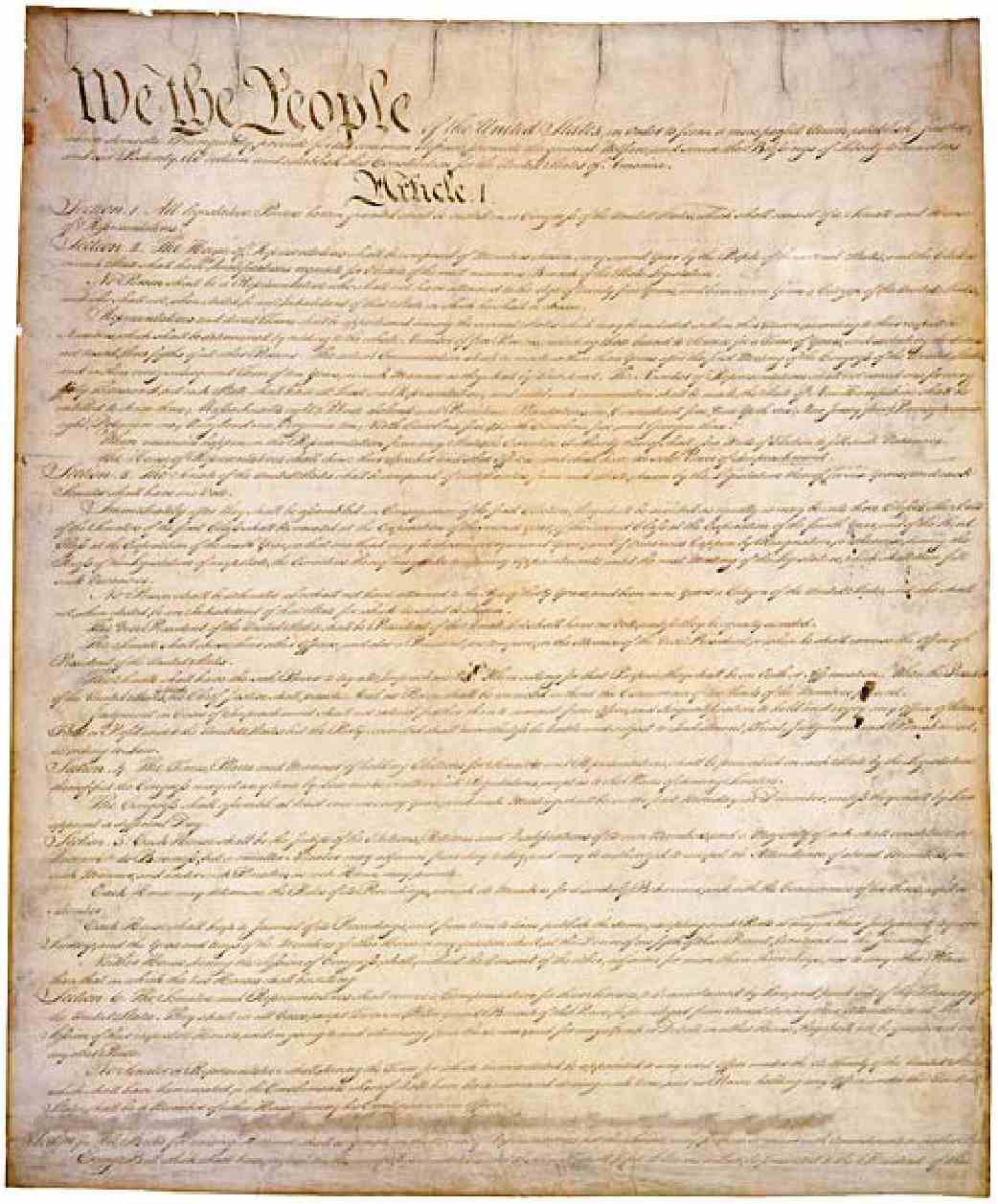

Since the constitution came into force in 1789, it has been amended 27 times, including one amendment that repealed a previous one, in order to meet the needs of a nation that has profoundly changed since the 18th century. In general, the first ten amendments, known collectively as the Bill of Rights, offer specific protections of individual liberty and justice and place restrictions on the powers of government. The majority of the 17 later amendments expand individual civil rights protections. Others address issues related to federal authority or modify government processes and procedures.
The Constitution is just a piece of document with words on it. The meaning of many words are open to interpretation. Under the current system, the judicial branch is assigned the task to interpret the words of the constitution and statutes passed by the Congress. If you are interesting, you can click on this link to read samples of the opinion of the Supreme court (the highest court in the federal system) .
This is a book titled Constitutional Law and Precedent -- International Perspectives on Case-Based Reasoning

(B) Intellectual Property
An area of law that many businesses pay attention to and is mainly governed by federal law is intellectual property. It is a category of property that includes intangible creations of the human intellect. There are many types of intellectual property. The most well-known types are copyrights, patents, trademarks, and trade secrets. The main purpose of intellectual property law is to encourage the creation of a wide variety of intellectual goods. To achieve this, the law gives the creators, usually for a limited period of time, property rights to the information and intellectual goods they create.

The intangible nature of intellectual property presents difficulties when compared with traditional property like land or goods. Unlike traditional property, intellectual property is "indivisible", since an unlimited number of people can "consume" an intellectual good without it being depleted. Additionally, investments in intellectual goods suffer from problems of appropriation: a landowner can surround their land with a robust fence and hire armed guards to protect it, but a producer of information or literature can usually do very little to stop their first buyer from replicating it and selling it at a lower price. Balancing rights so that they are strong enough to encourage the creation of intellectual goods but not so strong that they prevent the goods' wide use is the primary focus of modern intellectual property law.
The federal government offers strong protection to these types of intellectual property: (1) patent, (2) copyright and (3) trademark. Trademark is also governed by state law. But for companies that sell products across state lines (which include almost all medium to large size companies), federal trademark is the preferred protection. Traditionally trade secrets protection is mainly governed by state law. In 2016 the federal government enacted the Defend Trade Secrets Act. The federal courts now become an important venue for trade secrets protection.
There are other specialized protection, such as the Semiconductor Chip Protection Act of 1984 that protects integrated circuit layout designs. However, those types of protection are not widely used.
You can go this this page to learn more about intellectual property.
(C) Criminal law
Criminal law is the body of law that relates to crimes. It prescribes conducts perceived to be harmful to the society or a person, including one's self. Typically, a crime needs to have two elements:
(1) Actus reus: It is Latin for "guilty act" and is the physical element of committing a crime.
(2) Mens rea: It is another Latin phrase, meaning "guilty mind". This is the mental element of the crime. A guilty mind means an intention to commit some wrongful act. For example, insanity is an affirmative defense against conviction because of a lack of criminal intention. However, there is a small number of offenses (generally minor) that do not require mens rea and they are called "strict liability" offenses. Examples are some traffic offenses.

Both the federal government and states have criminal codes. The states, since they possess police power, have board power to pass criminal laws. The federal government, since it can only exercise those powers granted to it by the Constitution, can only pass criminal laws which are related to the powers granted to Congress. For example, drug crimes are subject to federal control because drugs are a commodity for which there is an interstate market, thus making controlled drugs subject to regulation by Congress under the authority of the Commerce Clause of the Constitution.
Below are two books on criminal law:
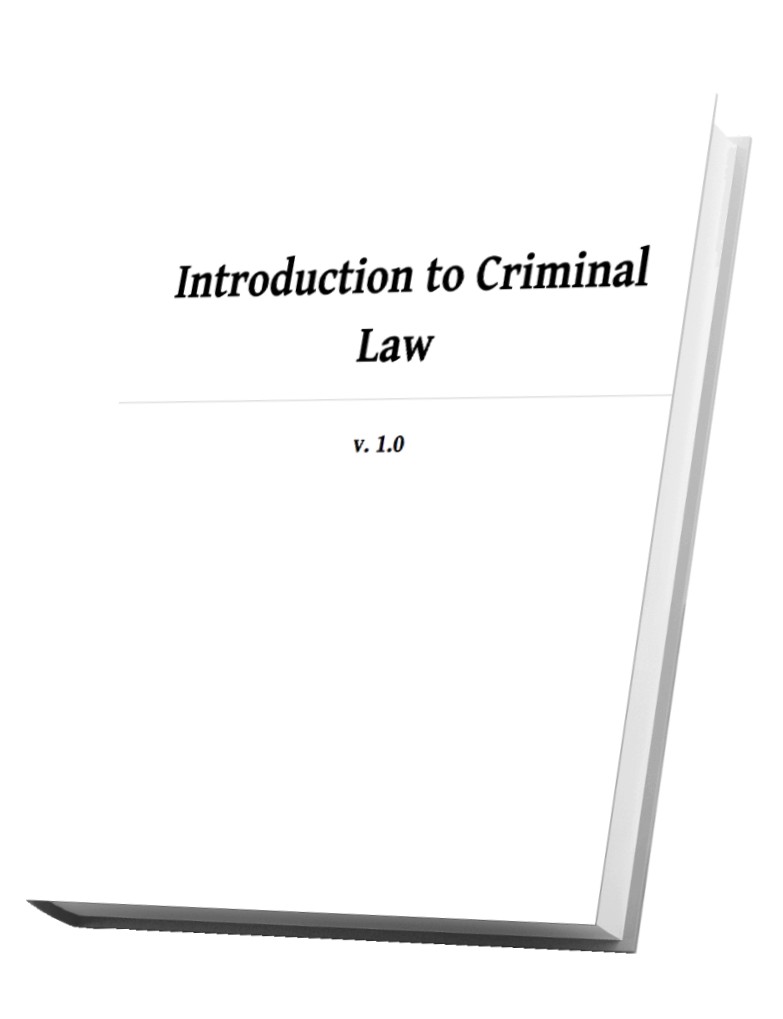
Introduction to the American Criminal Justice System
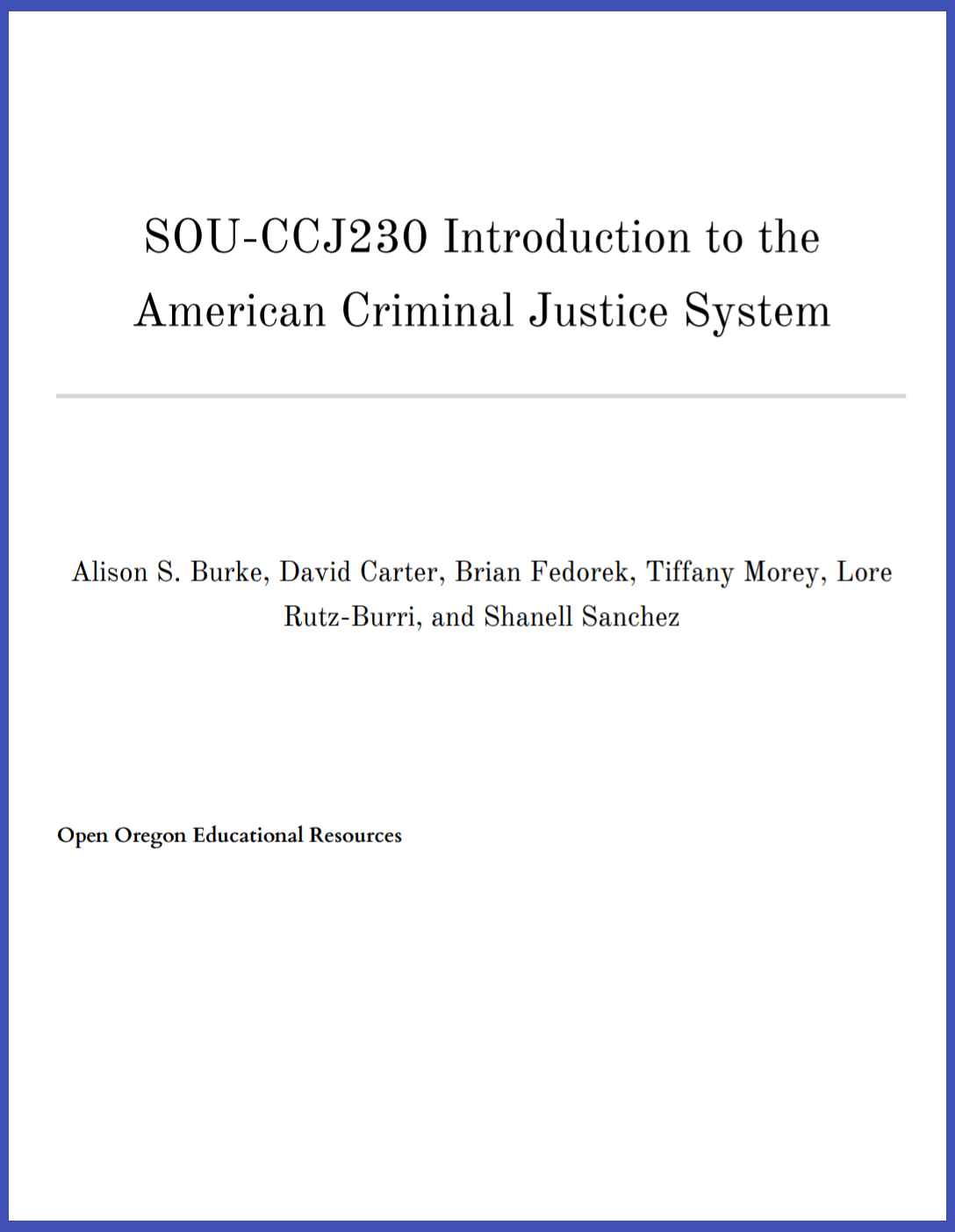
(D) Property
We discussed intellectual property above. But what is property? In law, property is a system of rights that gives people legal control of valuable things. There are two important types of properties: (1) real property (mainly land and buildings on it), and (2) personal property (movable possessions belonging to a person) .
(1) Real property

Real property, also known as immovable property, is land and all structures integrated with or affixed to the land, such as buildings, wells, dams, roads, etc. The law recognizes different sorts of interests in real property, called estates. Estates are distinguished by the varying property rights that vest in each, which determine the duration and transferability of the various estates. Two important types of estates in the land are:
(a) Fee simple: An estate of indefinite duration that can be freely transferred. This is the most common and perhaps most absolute type of estate under which the owner enjoys the greatest discretion over the disposal of the property.
(b) Leasehold: An estate of limited-term, as set out in a contract, called a lease, between the party granted the leasehold, called the lessee, and another party having a superior estate in the property, called the lessor. For example, an apartment-dweller with a one-year lease has a leasehold estate in her apartment. Lessees typically agree to pay a stated rent to the lessor.
(2) Personal property
Personal property is property that is movable. There are two kinds of personal property:
(a) Tangible property: These are properties that generally can be touched or felt.
(b) Intangible property: These are properties that cannot be touched or felt, and are often created by law. Examples are financial instruments, right to sue, and intellectual property.
Except for intellectual property, property is typically governed by state laws. Below is a book on property:
Open-Source Property: A Free Casebook

(E) Contract
A contract is a legally enforceable agreement that creates, defines, and governs mutual rights and obligations among its parties. A contract typically involves the transfer of goods, services, money, or a promise to transfer any of those at a future date. In order for a valid contract to form, there are requirements.
To form a legally enforceable contract, the parties must reach mutual assent. This is typically done through an offer and acceptance process. An offer is a definite statement of the offeror's willingness to be bound should certain conditions be met. If a purported acceptance makes changes to the terms of the offer, it is not an acceptance but a counteroffer (which simultaneously rejects the original offer). Mutual assent is reached when the parties agree to all the terms and conditions in the offer/counteroffer.
There is another requirement for a valid contract: consideration. Each party must give or promise to give the other party something of value. Otherwise the agreement may be considered something else, such as a gift, and the person receiving the gift may not sue for breach of contract. Consideration can be money, services, a promise to perform, or a promise to not do something.
What will happen if a party breached a contract? The most common remedy is the award of monetary damages to compensate the non-breaching party’s financial loss as a result of the breach. Note that punitive damages (i.e., to punish or make an example of a wrongdoer) are seldom awarded. Another type of remedy is called “equitable” remedies. Equitable remedies are awarded by a court when monetary remedy will not sufficiently compensate a party for the damage done by the breach of a contract. Examples of equitable remedies are specific performance (such as requiring the breaching party to deliver a promised real estate to the other party) and rescission (annulment of the contract).
Below is a book on contract (in three volumes):
Contract - Doctrine, Theory & Practice (Volume One)
Contract - Doctrine, Theory & Practice (Volume Two)
Contract - Doctrine, Theory & Practice (Volume Three)
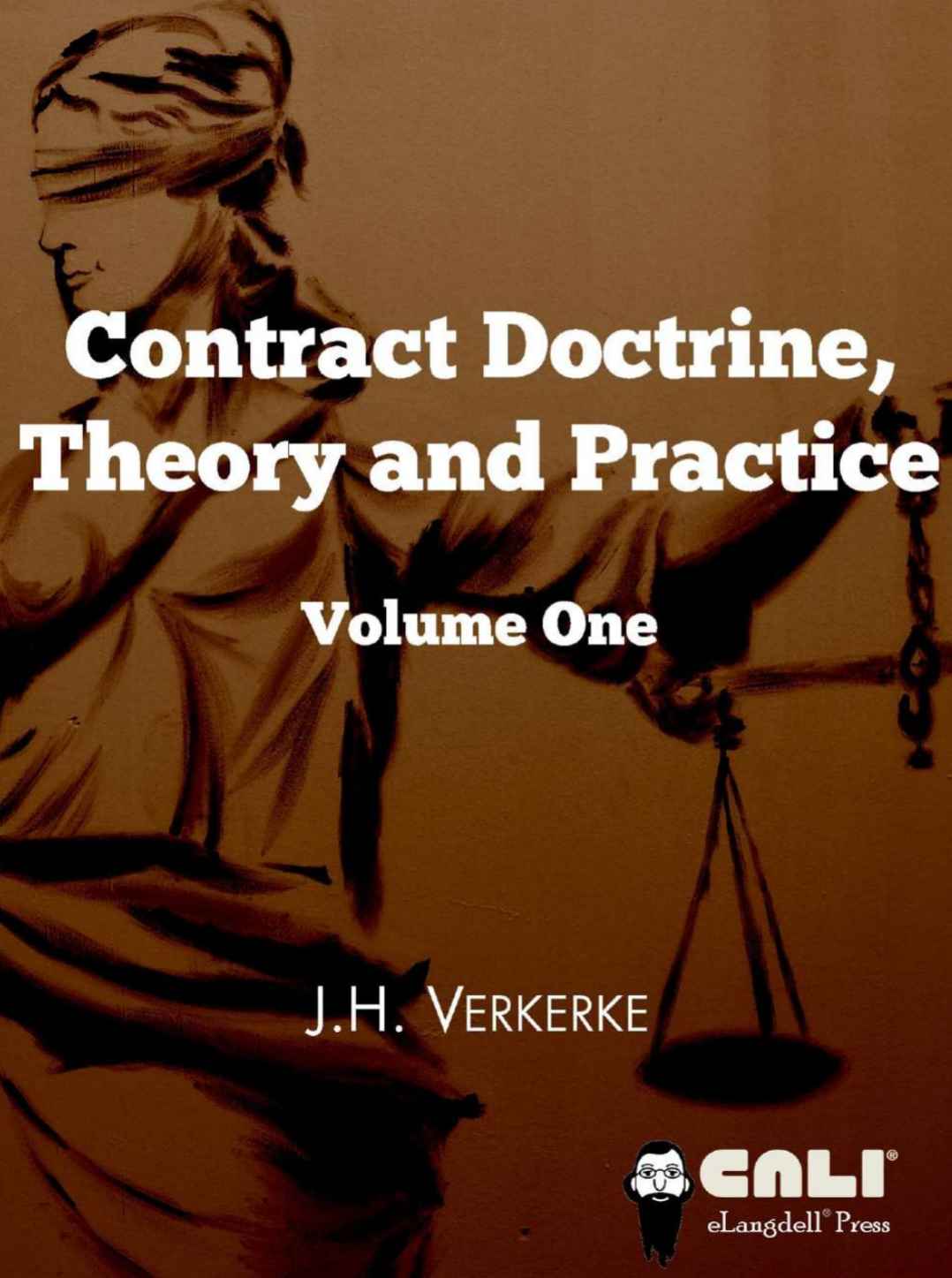
(F) Tort
Tort is an area of civil law that deals with the dangerous or unreasonable conducts of an individual or entity, which cause injury to another individual’s or entity’s person, property, or reputation, and which entitle the injured party to compensation.
A tort liability may occur as a result of intentional acts, negligent acts, or failure to act when the individual/entity had a duty to act. There are a number of specific types of tort that form the basis of the majority of tort lawsuits in the United States. These include, among others:
Negligence - The unintentional failure to live up to the community’s standard of reasonable care, having nothing to do with moral care. An example of negligence tort is car crashes. Car crashes are generally considered unintentional torts since the majority of them are not caused by an intent to inflict harms to other cars or people.
Assault - An intentional tort when one is placed in reasonable apprehension of an intentional, imminent, unconsented, harmful, or offensive touching by another person.
Battery - An unpermitted, unprivileged, intentional contact with another’s person. This tort includes contact that is actually harmful, as well as conduct that is merely offensive.
Trespass - Intentionally entering and remaining on the land of another without the possessor’s expressed or implied consent.
Defamation - A false statement of facts made to a third party (either in writing or orally) that causes damage to another person or business’s reputation.
There is another type of tort called "strict liability." It arises as a result of harm incurred due to the actions of a defendant without the need to prove fault by the defendant.
Whereas negligence is chiefly concerned with whether the defendant acted carefully or carelessly, strict liability tort imposes liability without regard to the defendant’s level of care. One prominent example of a strict liability tort is products liability, which permits a plaintiff injured by a defective product to recover damages from the seller of that product without having to prove that the seller acted negligently. Instead, generally speaking, a products liability plaintiff only needs to prove that (1) the defendant sold a product, (2) the defendant was a commercial seller of such products, (3) the product was in a defective condition at the time the defendant sold it, (4) the plaintiff sustained an injury, and (5) the defect actually and proximately caused the injury.
Historically, under the legal doctrine of “sovereign immunity,” people could not sue the government, unless the government gave them permission. This left people out in the cold, for instance, who were run over by the mailman, slipped in a puddle caused by a leaky water fountain in a government office, or were hit by a car driven by a government employee who was talking on his phone.
In 1946, the federal government passed the Federal Tort Claims Act giving people the right to sue the U.S. government in federal court for tortious acts committed by individuals acting in their role as federal government employees. This permission is limited, however, so as to maintain certain protections for the government. Some states passed similar laws.
Below is a book on tort:
Torts: Cases, Principles, and Institutions

(G) International law
International law is the set of rules, norms, and standards generally recognized as binding between nations. It establishes normative guidelines and a common conceptual framework for nations across a broad range of domains, including war, diplomacy, trade, and human rights. International law aims to promote the practice of stable, consistent, and organized international relations.
International law differs from nation-based legal systems in that it is primarily—though not exclusively—applicable to countries, rather than to individuals, and operates largely through consent, since there is no universally accepted authority to enforce the law upon sovereign nations. Consequently, nations may choose to not abide by international law, and even to break a treaty. However, such violations, particularly of customary international law and norms, can be met with coercive action, ranging from military intervention to diplomatic and economic pressure.
Below are two articles and a book on international law:
Recognition in International Law (a 10-page article published in 1927)
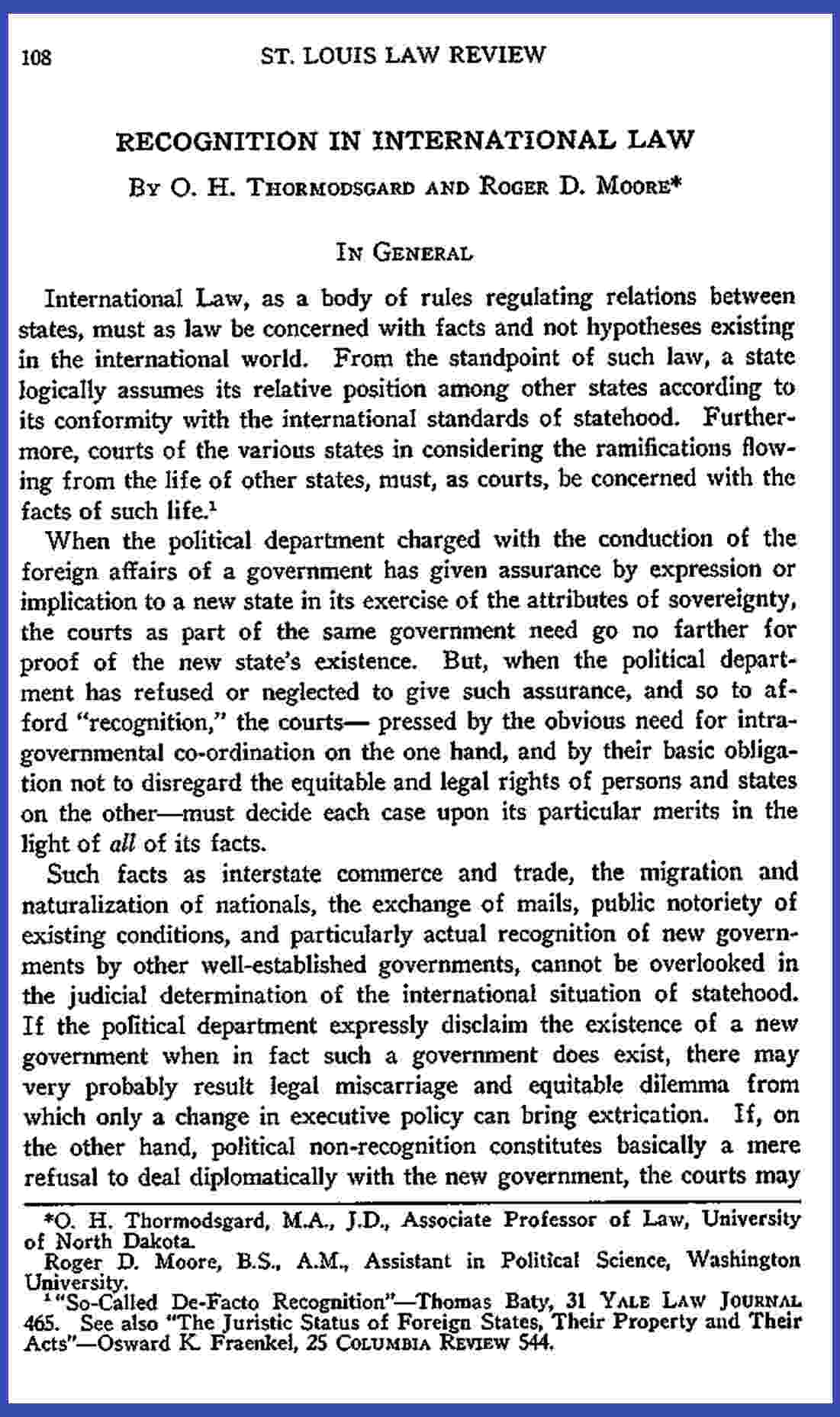
The Sources of International Law (a 96-page 1987 article)
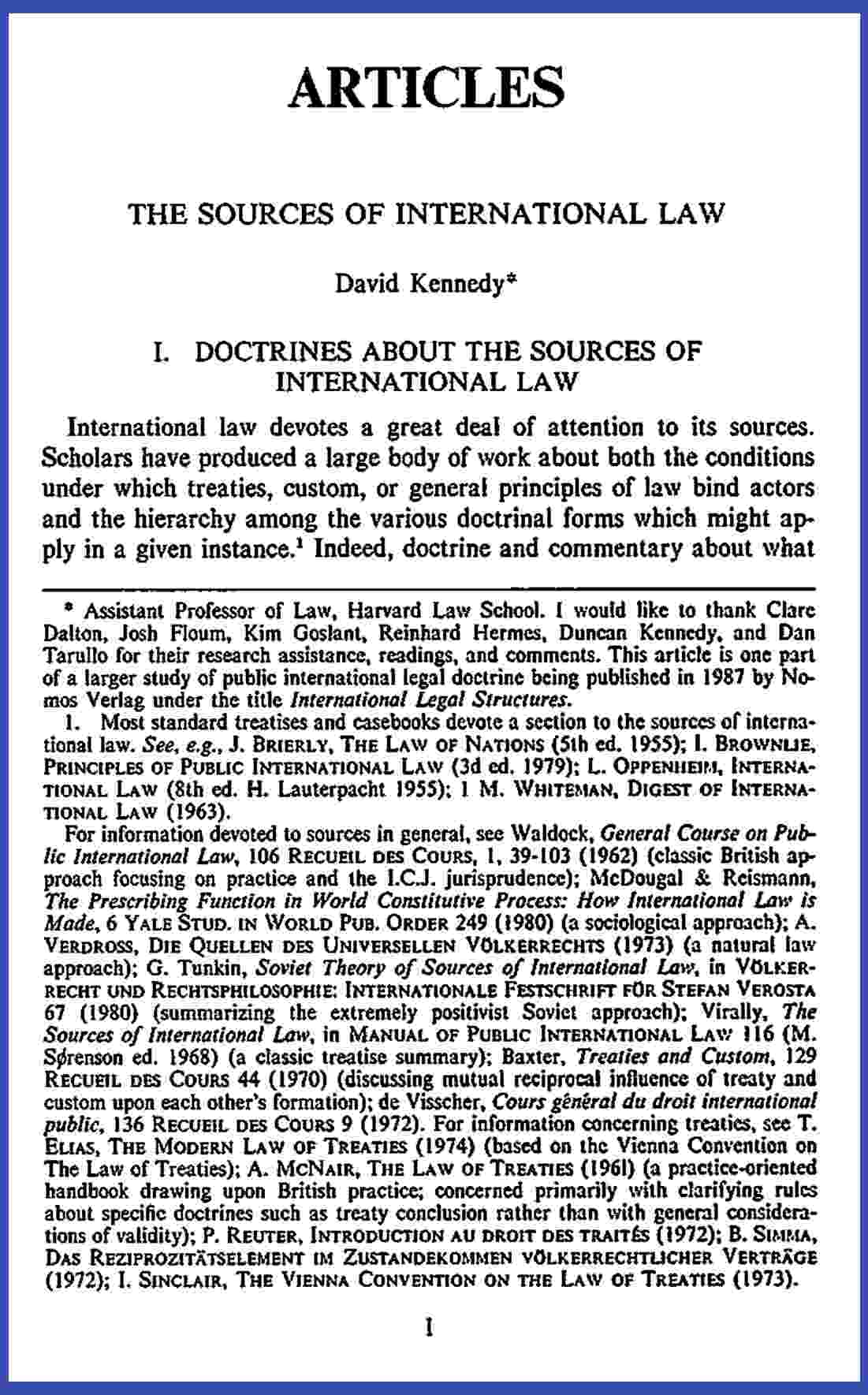
International Law Handbook (Book One)
International Law Handbook (Book Two)
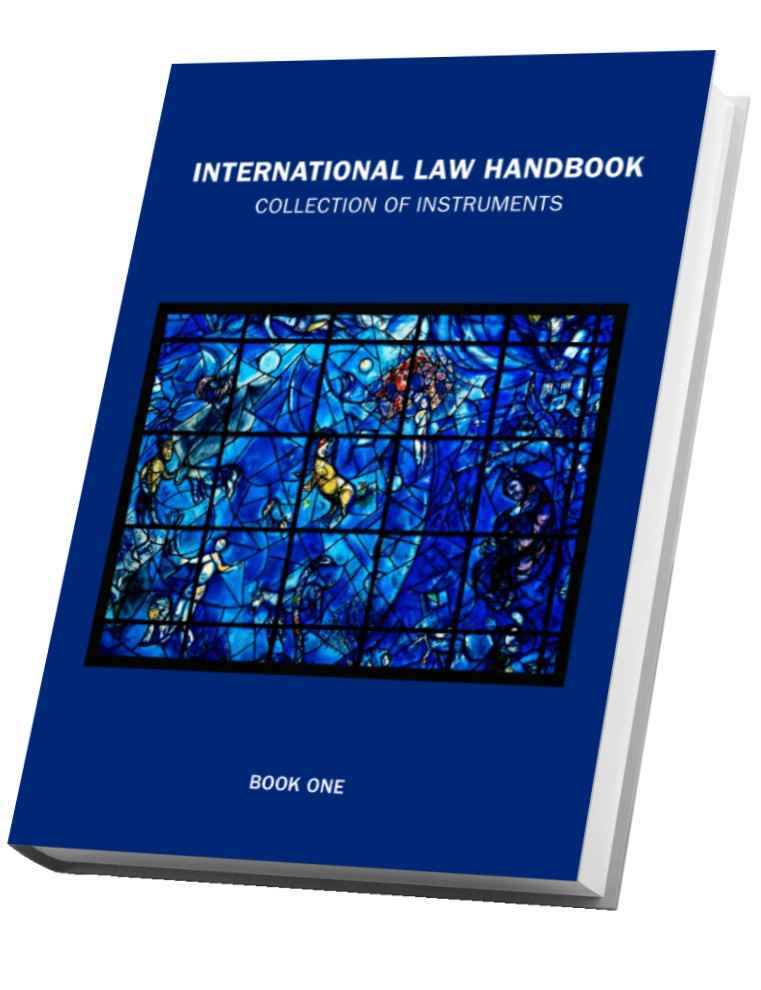
(to be continued)